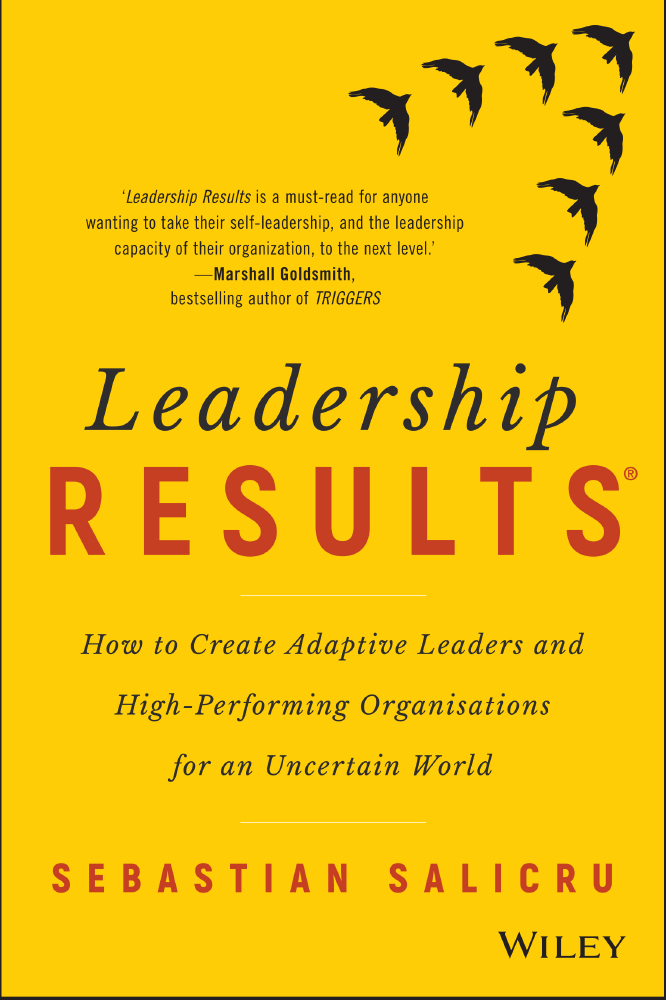Two frogs were out on a rainy day. They hopped into a barn where there was an urn of milk. Both frogs fell into the urn. In vain, they tried and tried to get out. One of the frogs lost motivation and said, ‘I can’t swim any more’ and drowned. The other frog kept swimming. Her movements churned the milk into butter, and she climbed onto the butter and hopped out of the urn.

Sebastian Salicru
Yes, the moral of this short story is something many people don’t like to hear: Motivation is overrated!
Motivation is always necessary to start anything. It’s about desire. But motivation alone won’t get results, especially if what you are trying to achieve is difficult or challenging. This is because motivation is often short-lived or temporary. How many times have you heard the expression, ‘they lost motivation’, or have lost motivation yourself?
This explains, for example, why most people never achieve their New Year’s resolutions – such as losing weight by joining a health club and adopting a healthy diet. They go to the gym regularly for the first few weeks, then lose interest and motivation. A similar thing happens when people listen to stories about heroic leaders or inspirational tales (e.g. motivational seminars or TED talks). They feel inspired at the time, temporarily uplifted and motivated; but does much change in the workplace a few days or months later?
The reality is that no one lives in a constant state of motivation. We all experience ups and downs and moments when we don’t feel like doing what needs to be done – just like one of the frogs in the urn.
So, if motivation doesn’t cut it, what does?
Commitment – not motivation – leads to results
You may have heard of the motivation’s cousin – commitment. The two frogs were motivated to get out of the urn, but only one was committed to keep going. As opposed to motivation, commitment is about determination, dedication and perseverance. Motivation may make you sign up to the gym, but it is commitment which will make sure you go regularly.
True commitment is enduring and long-term. It doesn’t vanish over time and leads to sustained action and results. This is because commitment implies an emotional attachment to something or someone. Once you find yourself devoted, loyal and faithful to a cause, you will also find yourself sustaining commitment, whether it is learning a new language, becoming fitter or succeeding at work. But watch it, all that glitters isn’t gold!
Three types of commitment
There are three types of commitment:
Because they ‘ought to’: The first type of commitment stems from a sense of duty. This is when people do something because they feel obliged to or they ‘ought to’. This may be for a number of reasons, such as staying in a job because their employer has invested in training them.
Because they ‘have to’: The second type of commitment is the one that makes people to stay with the organisation, for example, because if they leave they feel they will lose something valuable (e.g. friendships, pension benefits or career opportunities).
Because they ‘want to’: This commitment is real gold! It stems from employee’s identification and believe in the organisation’s goals and values. This is when employees feel engaged – they feel emotionally connected to the organisation. Hence, such employees are loyal, satisfied and proud to work for the company. Most importantly, engaged employees exert discretionary effort – they are willing to go ‘above and beyond’ the call of duty. Hence, this type of commitment makes people to move mountains!
Strategies to generate commitment
The great news about commitment is that it’s easier to generate in others than motivation is.
As a manager or team leader, you can generate your team members’ commitment by always adhering to the following ten practices:
- Communicate openly, honestly and respectfully
- Display competence at all times
- Demonstrate good judgement
- Make sure you can be relied upon
- Deliver what you promise
- Share important information openly and transparently
- Provide opportunities for others share their views
- Display consistency in decision-making
- Resolve/addresses disputes or conflicts promptly and on a fair basis
- Share influence and power appropriately
There are also four behaviours you need to avoid at all cost, never:
- Display favouritism
- Bully or abuse your power
- Discriminate against others
- Blame others when things go wrong
Employee commitment cannot be understated. It drives extraordinary performance, increases engagement and member’ willingness to stay with their work team and organisation by reducing turnover, and increases employees’ willingness to help their co-workers and to speak highly about your organisation.
The key question for you to consider is, can you and your organisation afford not to have a highly committed team in 2018?

Sebastian Salicru is a leadership development expert and author of Leadership Results: How to Create Adaptive Leaders and High-performing Organisations for an Uncertain World (Wiley, 2017). He is a thought leader and business psychologist based in Sydney who works globally. To take your leadership to the next level visit www.leadershipresults.com.au

